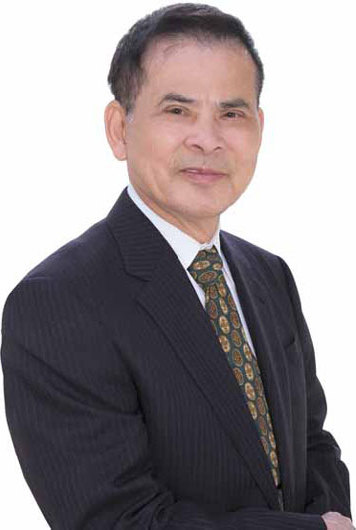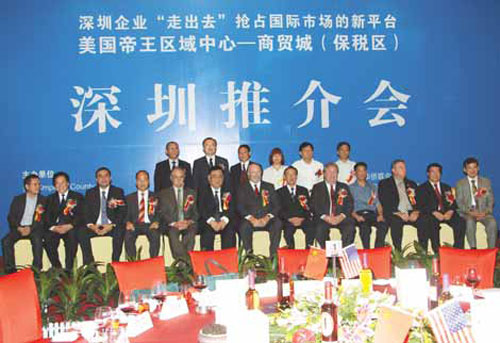Vision for Chinese trade on border
Updated: 2013-12-22 07:15
By Li Fusheng(China Daily)
|
|||||||||
James Lo is building a 'Shenzhen' in California, Li Fusheng reports.
James Lo, a Taiwan-born American, has long cherished the dream of helping Chinese enterprises go global.
President of Pacificland International Development, Lo is coming nearer to his vision as an international trade center takes shape in Imperial County, California.
|
James Lo (right) and government officials from California explore business opportunities in Shenzhen. Photos provided to China Daily |
"Now that all the groundwork has been finished, it is a good time for Chinese companies to start business here," said Lo.
Construction on the 330,000 square meter Imperial Regional Center just 4 kilometers from the US-Mexican border began in 2010.
Both the US federal and Imperial County governments were represented at the building's opening ceremony. Believing that the border county offers boundless business opportunities, Lo submitted his plans and applications to build a trade center
some 10 years ago. The approval from the county government finally came in 2007.
To better plan and manage the project, he established Pacificland International Development in 2008.
Now that the project is proceeding smoothly, Lo said he is relieved that his efforts of more than a decade have started to pay off.
He said it will offer perfect opportunities for Chinese companies, especially small and medium-sized ones, and will benefit Sino-US trade as a whole.
"Chinese companies can first ship semi-finished products from China to the Imperial County's bonded zone and process them into finished products.
"Now that they are made in the US, they can enter the Canadian and Mexican markets exempt from tariffs in accordance with the North American Free Trade Agreement," said Lo.
"The products can also pass through Mexico to Central and South America and countries that have signed free trade agreements with Mexico. They can also be sold back to the US as international brands."
Convinced of its huge potential, Lo is investing $450 million into the project.
It will have seven zones including a fair for trading small products from China, a processing zone, a logistics and distribution center, a Chinese food street and entertainment facilities.
"The trade center will integrate the functions such as the Yiwu retail center in Zhejiang province with a fair on the Sino-Kazakh border and a bonded zone in Shenzhen," said Lo.
He mentioned the locales in the hope of making the center sound less distant to Chinese entrepreneurs.
Though born in Taiwan, Lo is very familiar with the Chinese mainland.
He toured many cities and once drove from Jiayu Pass on the Great Wall in Gansu province to Urumqi, capital of the Xinjiang Uygur autonomous region.
Lo is also establishing a 15,000 sq m bonded warehouse near the trade center so that it can help companies store and distribute products.
Though not yet finished, the center has already become a magnet for service facilities, said Lo.
"Clinics, banks, insurance companies, translation centers and customs brokers have been built around the project and they will surely help businessmen from across the world conduct business in a more efficient way."
Lo said the location of Imperial County also adds to the attractiveness of his trade center.
Located in Southeast California, it has San Diego to the west and the state of Arizona in the east.
As a result, the county has a network of interstate and cross border expressways and railways that can ship goods to Los Angeles, Phoenix and San Diego within three hours.
"The location makes it an ideal place to house a trade platform," said Lo, adding that the county is shifting its focus from agriculture to logistics, retail and light industry.
Lo estimated that 32 million people live within 400 km of Imperial County, providing access to a rich source of both workers and consumers.
As it borders Mexico, the county also receives an influx of traders, goods and resources from the country as well as Middle and South America.
Statistics show that 60,000 to 100,000 people a day go to the US through the county from Mexicali, capital of Mexico's Baja California.
The burgeoning trade has helped Imperial County have the most rapid economic growth among all the 58 counties in California."The relationship between Imperial County and Mexicali is like between China's Hong Kong and Shenzhen," said Lo. "To further promote Sino-Mexican economic exchanges, the county is planning to double the number of border crossings to 144."
Contact the writer at lifusheng@chinadaily.com.cn

(China Daily 12/22/2013 page7)
